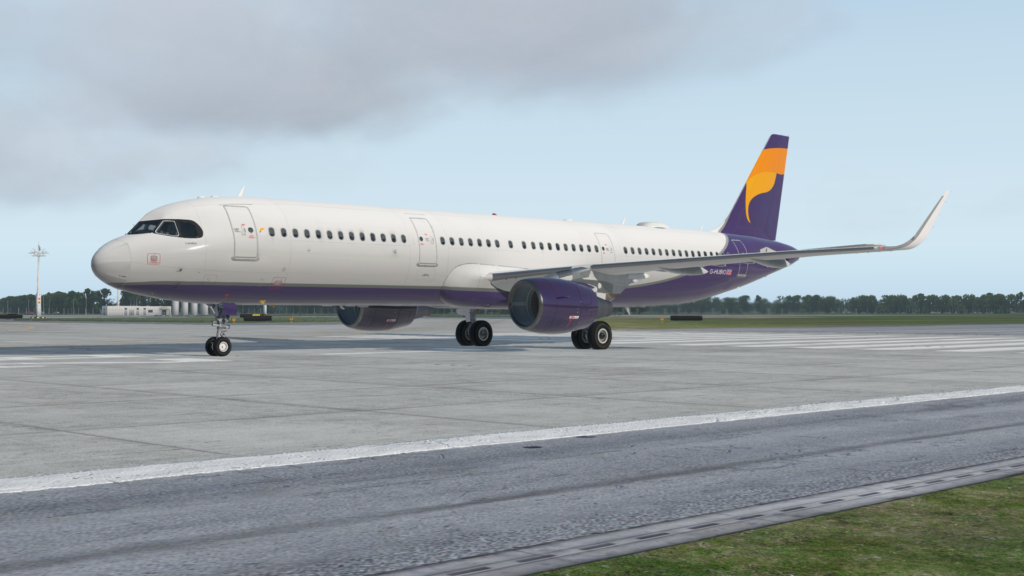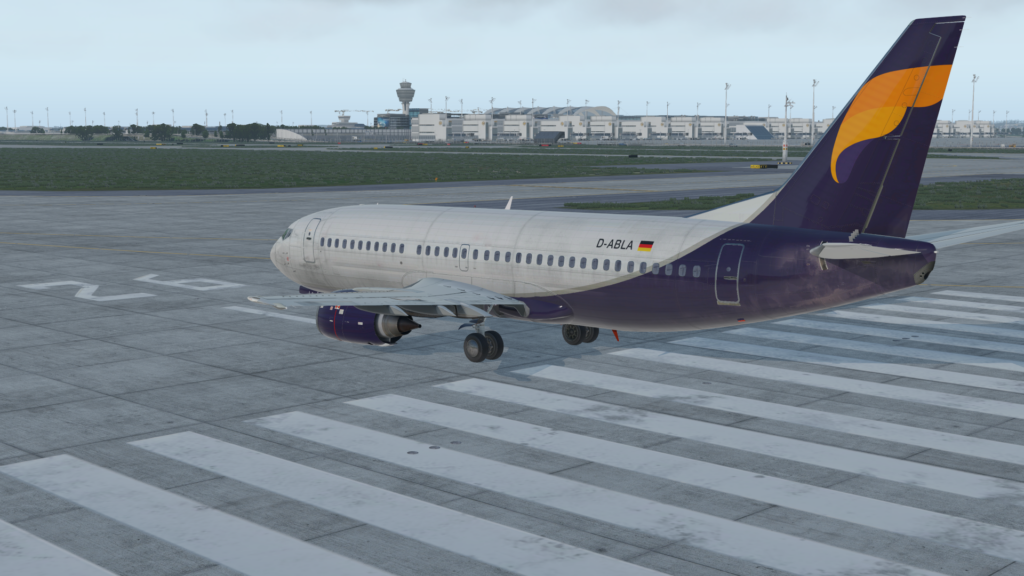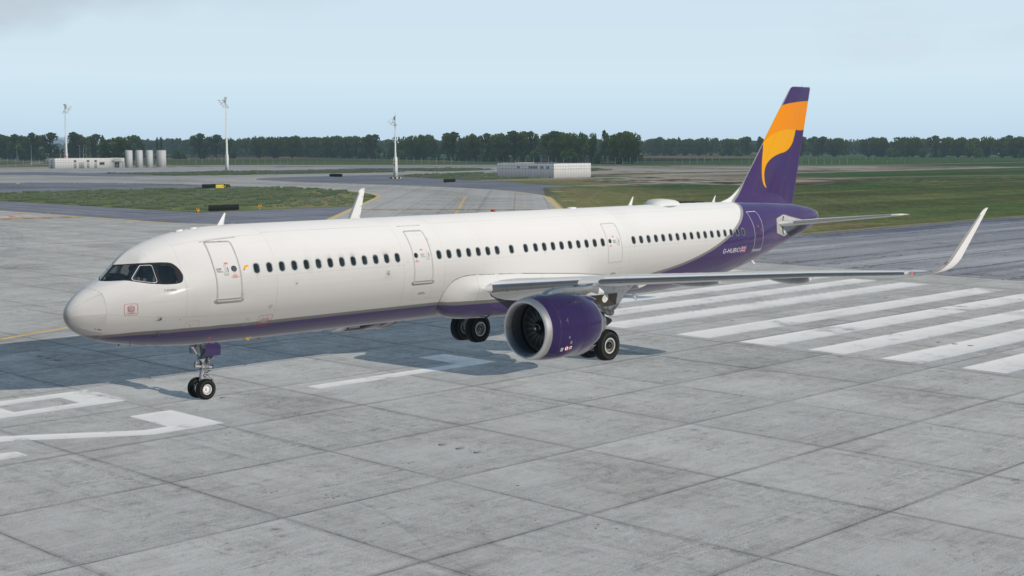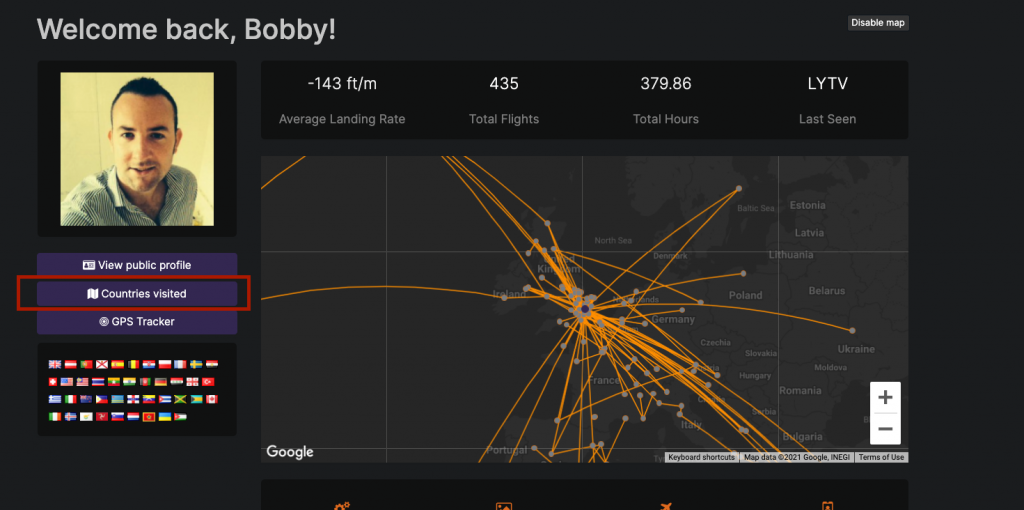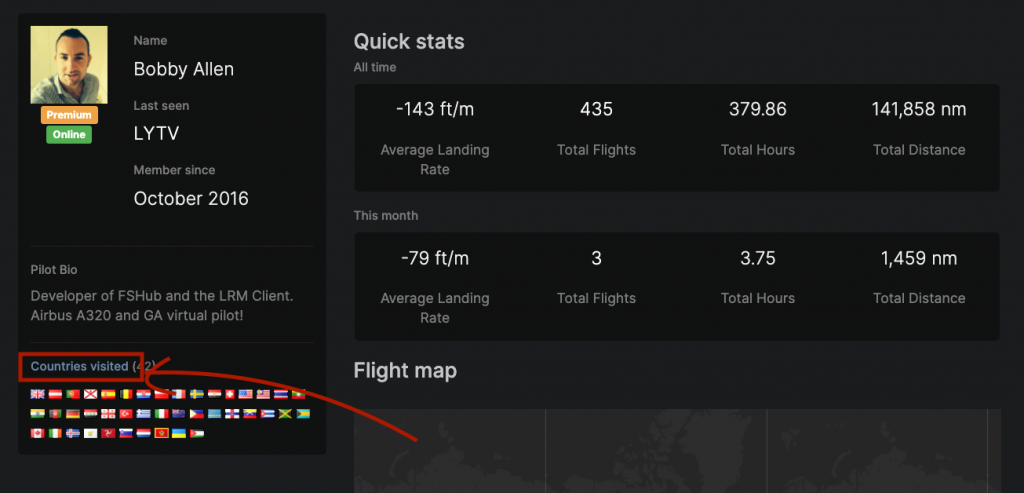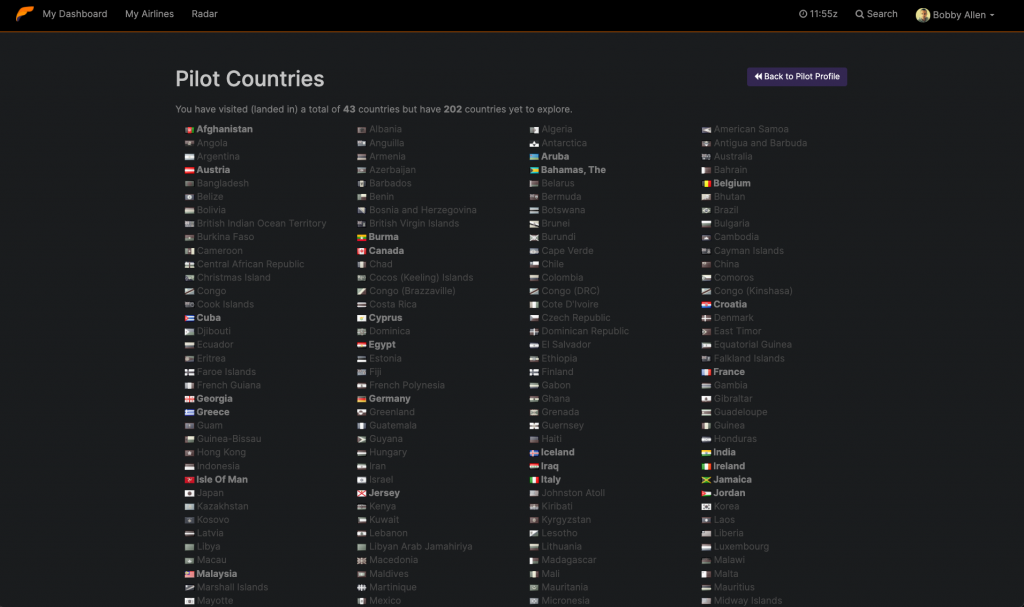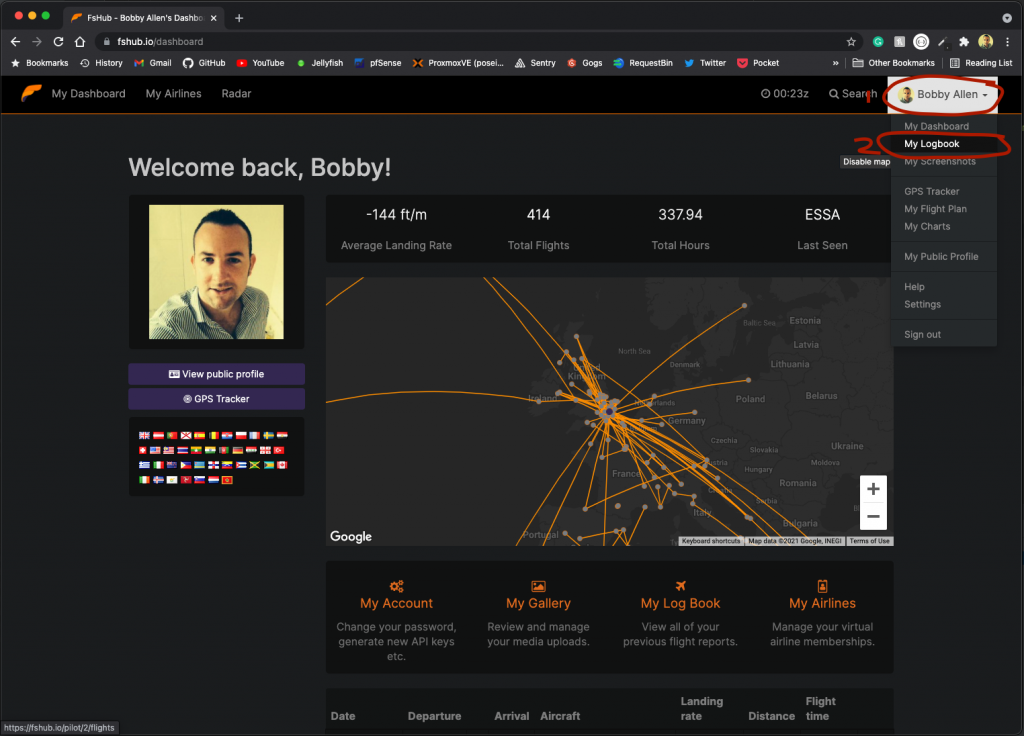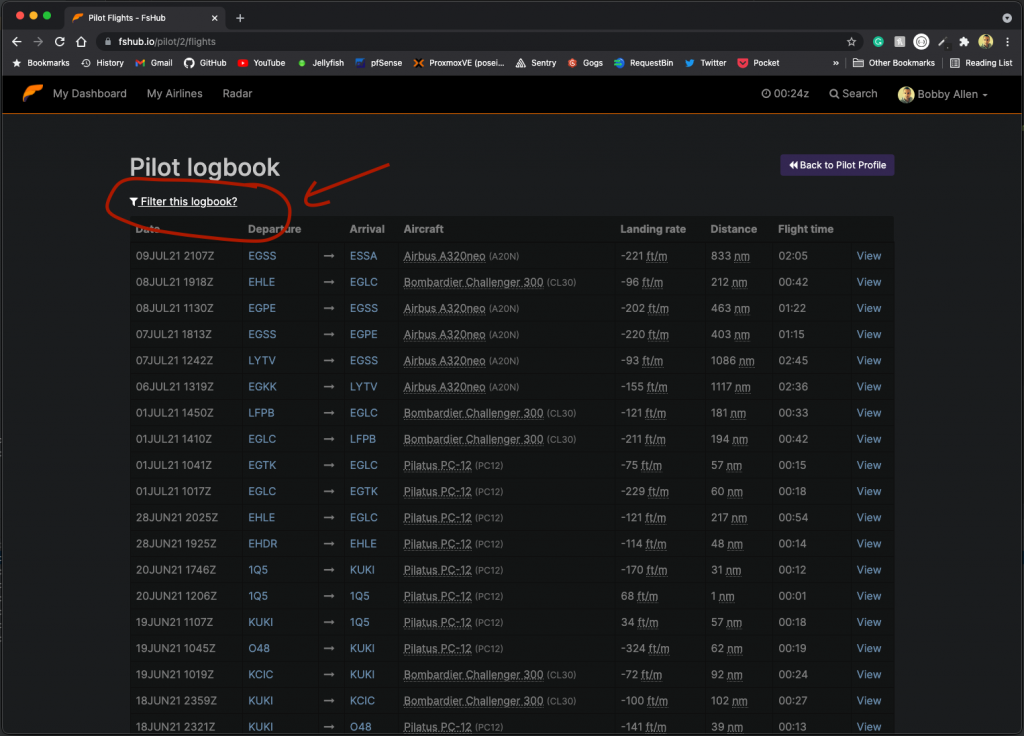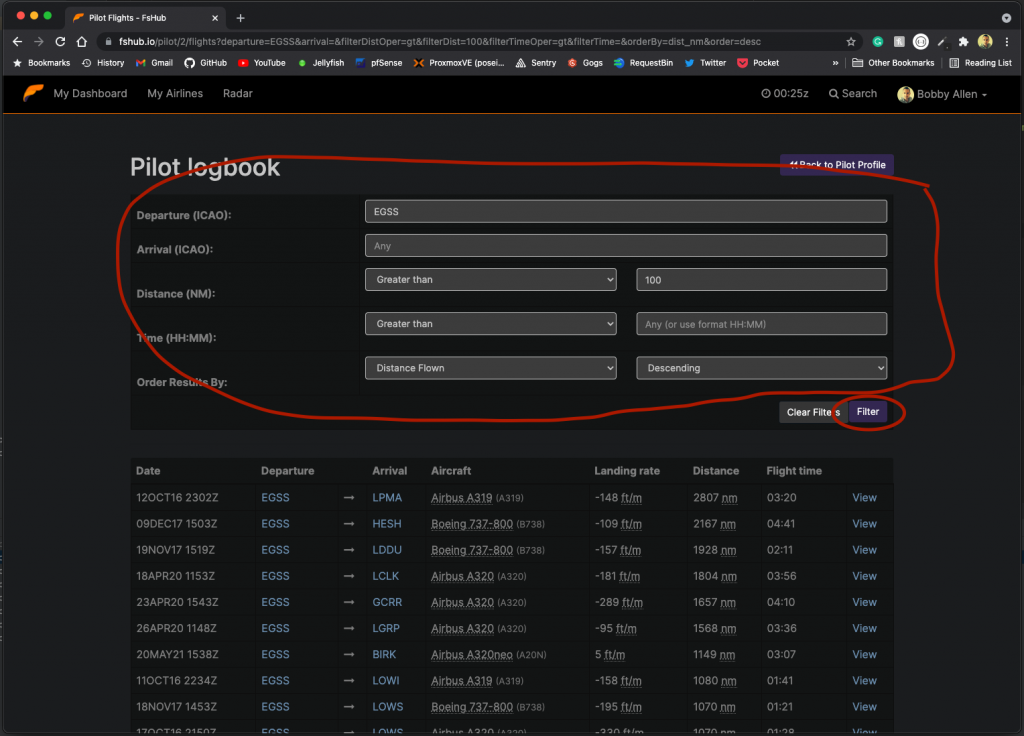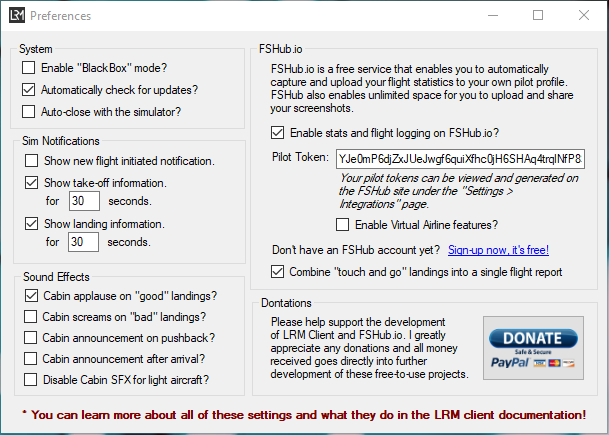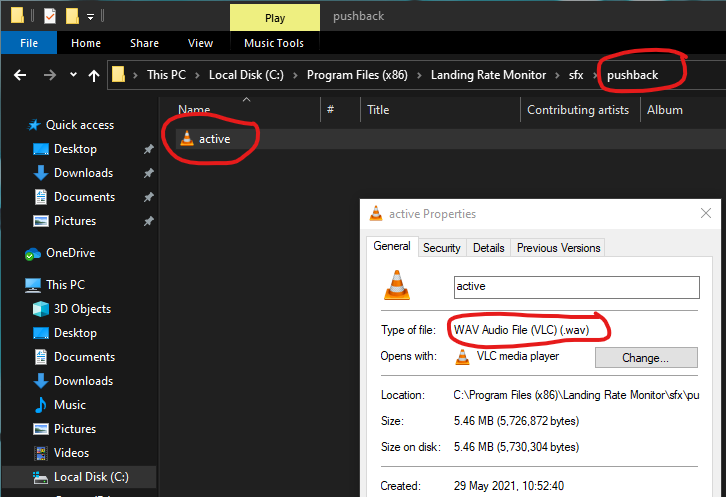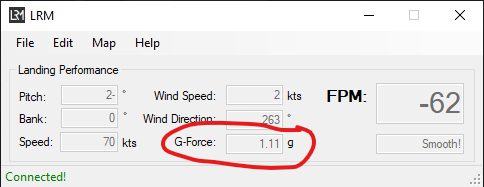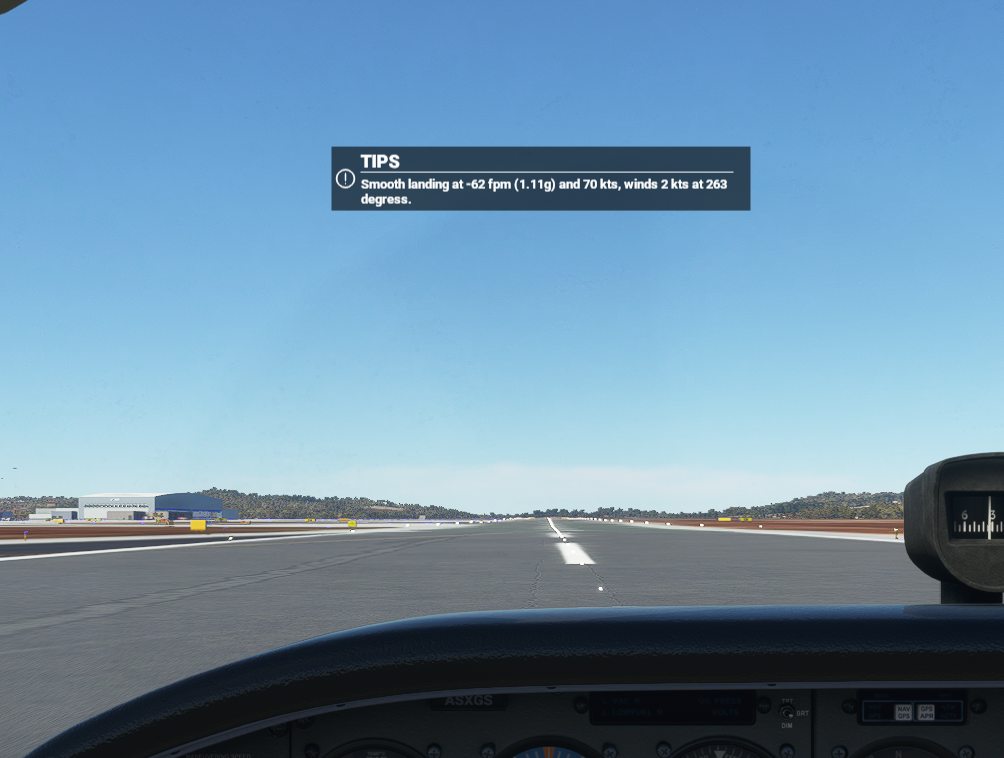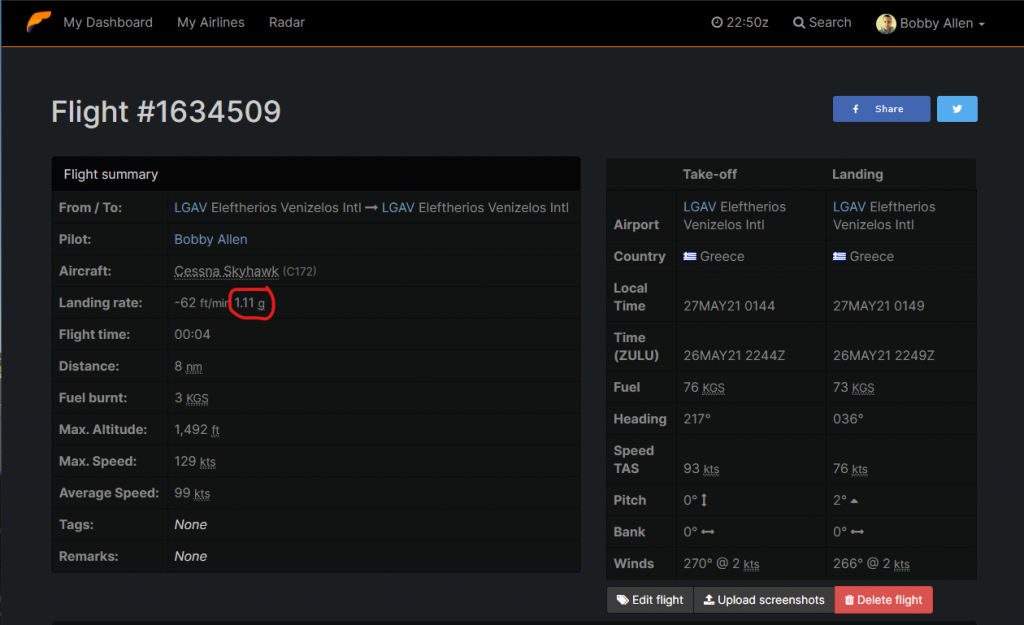Following several weeks of hard work and long hours, we are finally pleased to announce the official release of LRM v5!
The release was slightly delayed by some last-minute feature additions and further testing (as we wanted to be sure that you didn’t have any issues when installing and using the latest version) so apologies for that!
LRM v5 has, without a doubt the biggest number of improvements and optional new features since 2017 – it is also the most tested release and we are confident that you will share our excitement and enjoy this particular version as much as we do!
This new version of the client has many new features that can be enabled (the majority of them are disabled by default for the simple fact that we feel you should explore at your own pace); some of my personal favourites however are:
- Screenshot Geotagging – FsHub has always provided free and unlimited screenshot storage space for all users and we are most definitely fans of taking a ton of screenshots during our flights and so, we decided to take screenshots to the next level by enabling users to setup automatic screenshot geotagging, which, when your screenshots are uploaded to FsHub can now be displayed on your flight report map as well.
- AeroPad (our very own integrated Electronic Flight Bag) which can be accessed through a browser on your flight simulator computer or any other network-connected device (we specifically built it to function on iPads and Android tablets but will work in any browser too!)
AeroPad comes with a handful of “apps” out of the box including a real-time GPS/”moving map” app with integrated airport lookup facility, Charts Browser, Cabin Manager (for playing a whole host of fully customisable (per-aircraft livery) cabin annoucement messages), METAR Services to retrieve and display real-world weather reports and a couple of other, less interesting apps! - A fully customisble cabin annoucement system that can be configured on a per aircraft and aircraft livery basis through the LRM interface (no more copying and replacing sound files manually or listening to my voice giving you the instructions as to how to achieve the pushback and arrivial messages :D).
- You can now “sync” your airport charts from your FsHub flight case directly to your computer using the new “Chart Sync” screen which then enables you to filter and view these charts on the AeroPad EFB.
- You can tweak the landing rate score parameters on a per-aircraft basis (if you don’t like the default LRM values), you can also disabled the “G-force” calculation too if you’d prefer to just see your landing score based on the “FPM” value.
- A built-in METAR and TAF report tool that you can use directly from the LRM client interface – providing real-world METAR and TAF reports.
- You can enable a new feature called “Landing rate logbook” which can store basic landing rate details to a CSV file on your local computer – this obviously isn’t essential if you use FsHub as FsHub’s metrics on your flight are far superior.
- The “LRM Data Connector” – This feature enables developers to build apps in any programming language of their choice and gain access to the aircraft’s flight data in real-time locally (on the same computer as your flight sim) or on other devices on the same network (that is, if you allow it through your computer’s firewall) – our new EFB uses the “LRM Data Connector” behind the scenes too which makes being able to run our EFB remotely on a tablet device possible! As a developer, the possibilities of using this new feature are endless and hopefully others will use the data connector to build all kinds of apps and services (and hopefully share with our community too :)) – I’m especially exicited for this!
- The ability to build HTML/JS “apps” for AeroPad – If you know HTML/JS you can easily build and share apps that users can “install” into their AeroPad – documentation on this is coming soon but it’s much easier than you think and app developers get access to a set of REST API endpoints that they can access all kinds of data and use in their apps however they like… app developers can also query external API’s too if they wish! We will release a few “simple” apps for AeroPad very soon that will give you “one-click” access to other popular sites like SimBrief, RouteFinder, FuelPlanner.com and for those that like using AirCharts or ChartFox… they’ll be coming too (although you’d get a better expereience and native feel if you downloaded and used the new Chart Browser feature that is provided out of the box ;))
Various other tweaks and improvements have been added too, such as:
- A warning/user confirmation prompt when closing LRM client if your aircraft is mid-flight or is yet to send the final flight report back to FsHub (this should prevent you from accidently closing your simulator and losing flight data).
- It’s now much easier to link LRM to your FsHub account – you can use the new “Link my account” button in the preferences window (instead of having to generate, copy and paste an API key from FsHub.
- The majority of the AeroPad apps are “airline aware” and will automatically style based on the “active” virtual airline’s colour scheme/logo (if you don’t use Virtual airlines in FsHub, the default style will be applied as you might expect).
We’ve also been working hard to document these new features on our brand new documentation site. To make things easier, once you install the client you will find various “tip” links to help you get started with the new features (that is, if you intend on using them of course) you will however still feel right at home with the main interface as it looks and functions the same (we know from the user survey that our users liked the simplicity of LRM and FsHub!) – we’re still working on the documentation for now but the majority of the new features are fully documented already so should help you get started, rest assured though that these documents will continue to be worked on over the next few days! Everything, in all honesty, should be pretty self-explanatory anyway so please, fear not!
As a reminder, these new features are entirely optional and should you choose not to enable them, LRM will work as it did previously but with some added protection against you accidentally closing LRM mid-flight (this will now prompt and ask you to confirm).
We highly recommend all users upgrade to LRM v5 regardless of if they choose to enable and use the new features or not as various other changes and under the hood improvements have been made of which, in the future, may prevent older versions of the LRM client from functioning correctly (such as SSL configuration updates and dependency updates etc).
Would you like to upgrade now?
You can download the LRM v5 release now using this link!
The LRM website (lrmclient.org) will also be updated soon with new screenshots, an updated feature listing and updated links to the documentation but we are keen to get this new version in the hands of our most active users as we know the release has already been delayed by a couple of days!
The launch event livery pack!
To mark the official release of LRM v5 and LRM’s 8th birthday that is just a few days away – thunfischbaum has created three exclusive ” v5 launch event” liveries specifically for X-Plane users (sorry MSFS folk – he doesn’t own a copy of that, unfortunately)…
The pack contains the “FsHub” livery for The Toliss A321, Toliss A21N and the IXEG B773, you can download these liveries using the links below:
- Download Toliss A21N “FsHub” Livery
- Download Toliss A321 “FsHub” Livery download
- Download IXEG B733 “FsHub” Livery download
A special thanks to the team!
I would like to personally thank Clorix and thunfischbaum from the FsHub Support team – they’ve been doing a lot of testing for me during the development phase, I’ve been throwing releases at them every day for about a week now (and every few days prior to that :)) and their feedback and capturing issues and reporting back in a timely fashion has been great!
In addition to the support team, we also have a group of “Test pilots” (namely Phil, Ryan, CIVA006/Vernon, Caspey1UK and Alex 002) over at our Discord server of whom have tested a number of releases recently too and their feedback and reporting of issues has been much appreciated too!
Thank you guys – I have really appreciated your help and support as doing this alone would have taken so much longer!
Feedback is always welcome and we would love to hear from you!
If you do (or don’t) like anything in particular or have issues with any of the new features (or LRM in general), as always, you can use our Community forums, our Discord server or send us a personal message as we’d love to hear from you!
If you don’t think something is working with the latest version of LRM or you think you found a bug, it probably goes without saying but please do report it to us using any of the support channels mentioned above and we’ll be quick to investigate and provide a solution!
What’s next?
Obviously, in the event of any issues found and reported with LRM v5, these will be fixed and an update provided as soon as possible but and as per our extensive testing, this time around I would be surprised if this was the case and therefore, these are the next things on my “to-do” list…
Between now and Christmas, now that LRM v5 has officially been released, my plan is to do further improvements to the main FsHub site (cleaning it up, refining some of the pages and generally improving the user experience of the site (pre-load thumbnails etc.) – no drastic changes just giving it a bit of “TLC”.
There will also be more navaid and airport data updates too that will happen behind the scenes – this is something that I’m working on getting fully automated and including even more data such as airways, SID’s and STARs (for those that use the flight plan features in FsHub.
Probably the biggest major feature that I have planned to add to FsHub in the next few weeks will be related to the new Screenshot Geotagging features that have been added in LRM v5…. At the moment, (if you enable Screenshot Geotagging in LRM and you choose to upload these screenshots to FsHub) the data is processed and stored in our database but the FsHub website has not yet been updated to display this new data and so, I will be adding some nice “dropdown” geo-location overlays (containing such information as the name of the town/city the screenshot was taken near, altitude, heading and placing the aircraft on a small map so you can see exactly where it was taken), I will also be using the screenshot metadata to add to a new “Screenshots” tab that appears in the Airport Information pages on FsHub (will show screenshots that was taken of aircraft on the ground at a particular airport) in addition to building a new page where users can search for screenshots in a certain area (dragging a box over a map etc – I think this will be pretty cool!)
Although the new EFB (AeroPad) is web-based (but running from your computer) and enables network access to it from tablet devices (you can even add an icon to launch it on your iPad or Android home screen), if there is big interest for me to build a dedicated (native) iPad and Android tablet app then I will start working on that too… In the end, I decided that a “web-based” EFB would be more flexible especially for those users that like to use a laptop instead of a tablet device.
Some minor updates to the Radar page and web GPS pages too – clicking on an aircraft will display the path already flown – previously this wasn’t persistent and would only show the path flown since clicking on the aircraft (as does the Web GPS page)- I will be working to make these paths persistent though and think that although this is a non-critical update, I think it will be a nice little touch!
In other news, we’ve also contacted SimBrief to see if we can obtain an API key from them – this will enable us to build an automatic route calculator directly into FsHub and potentially the new AeroPad EFB for those users that use the Route Plan features (but we’re still awaiting a response at the moment and yet to look into the finer details (terms and conditions of using it etc).
Are we missing anything?
I feel now that I have implemented and released everything that has been requested on the recent user surveys – with the exception of an LRM client for MacOS (which is something I’ll be looking into very soon however!!)
But, please, do let me know if you think we’re missing anything if you would like to see something added (that you feel fits the genre of what FsHub is) please contact us!
Having issues after upgrading?
We understand that people are using many different versions of LRM (even back as far as five years ago) and as we’ve not been able to test the upgrade path for all versions (as we’re only a very small team), we have made big improvements to the “uninstaller” (of all things :D) to ensure that in the event of any upgrade issues, users can simply uninstall and re-install it – this will force a completely clean install which should be 100% error-free!
So please keep this in mind… if you have issues after upgrading LRM to version 5 (likely due to the fact you are on a very old version), please uninstall and re-install LRM v5 – LRM v5 will then perform a fully fresh installation!

